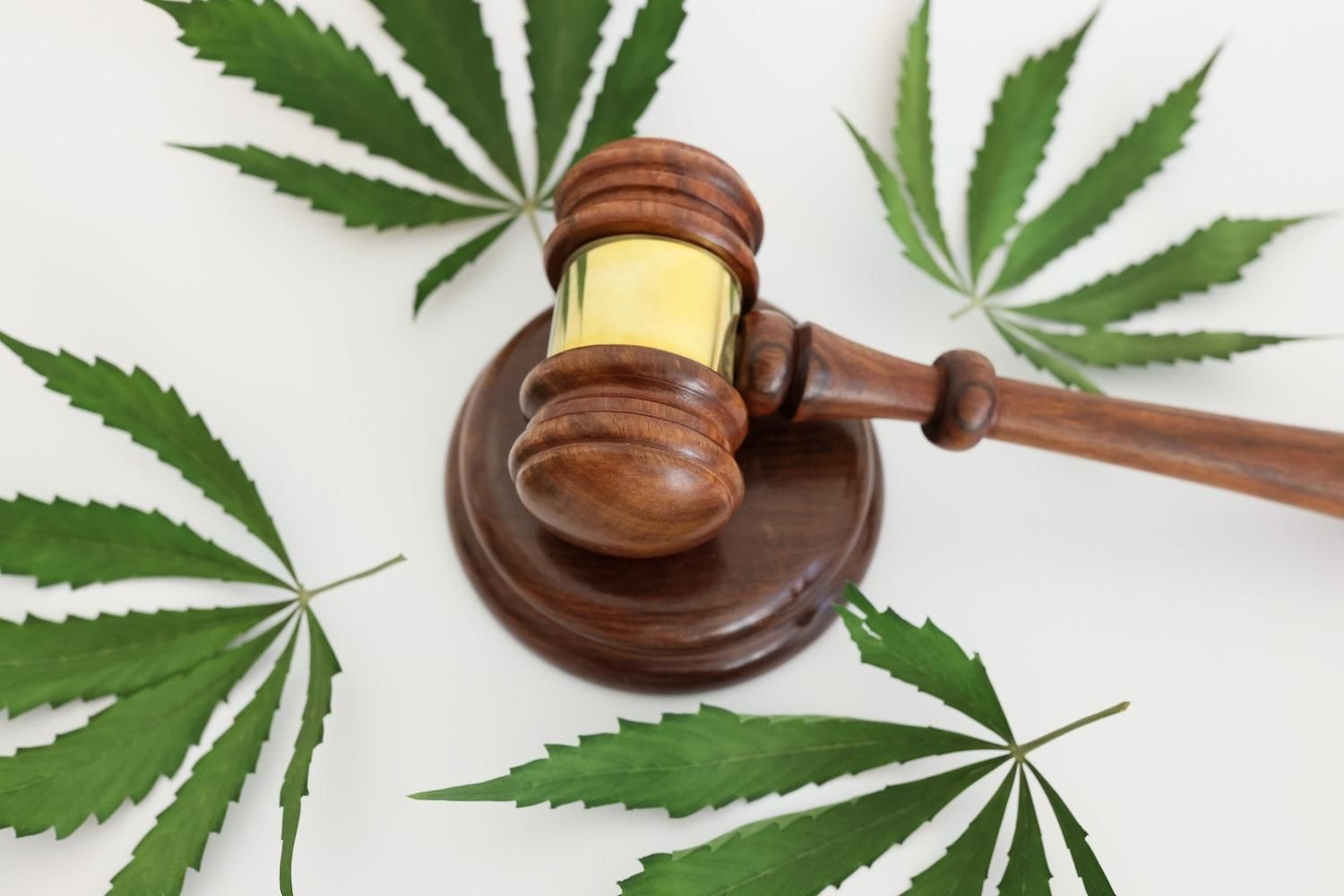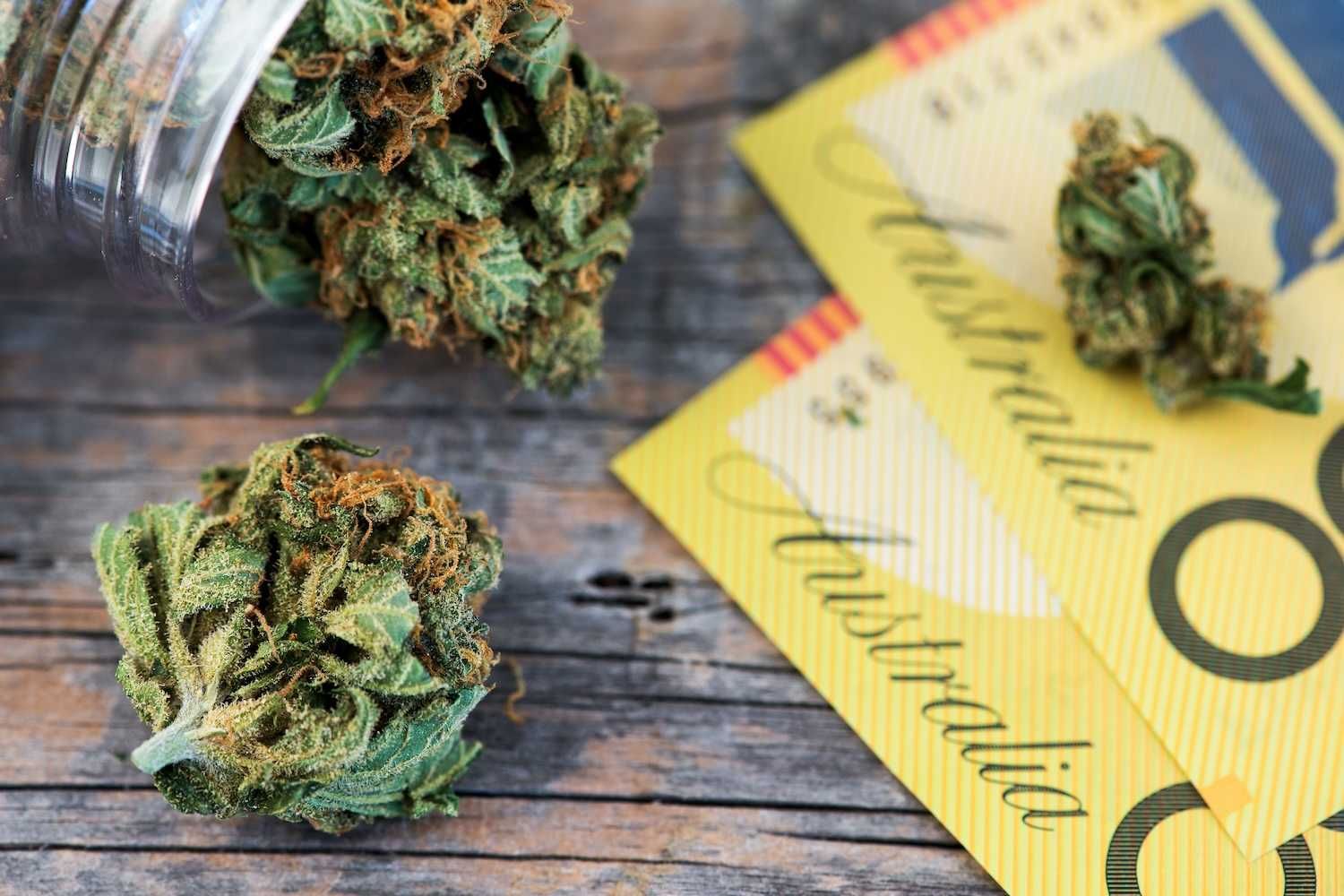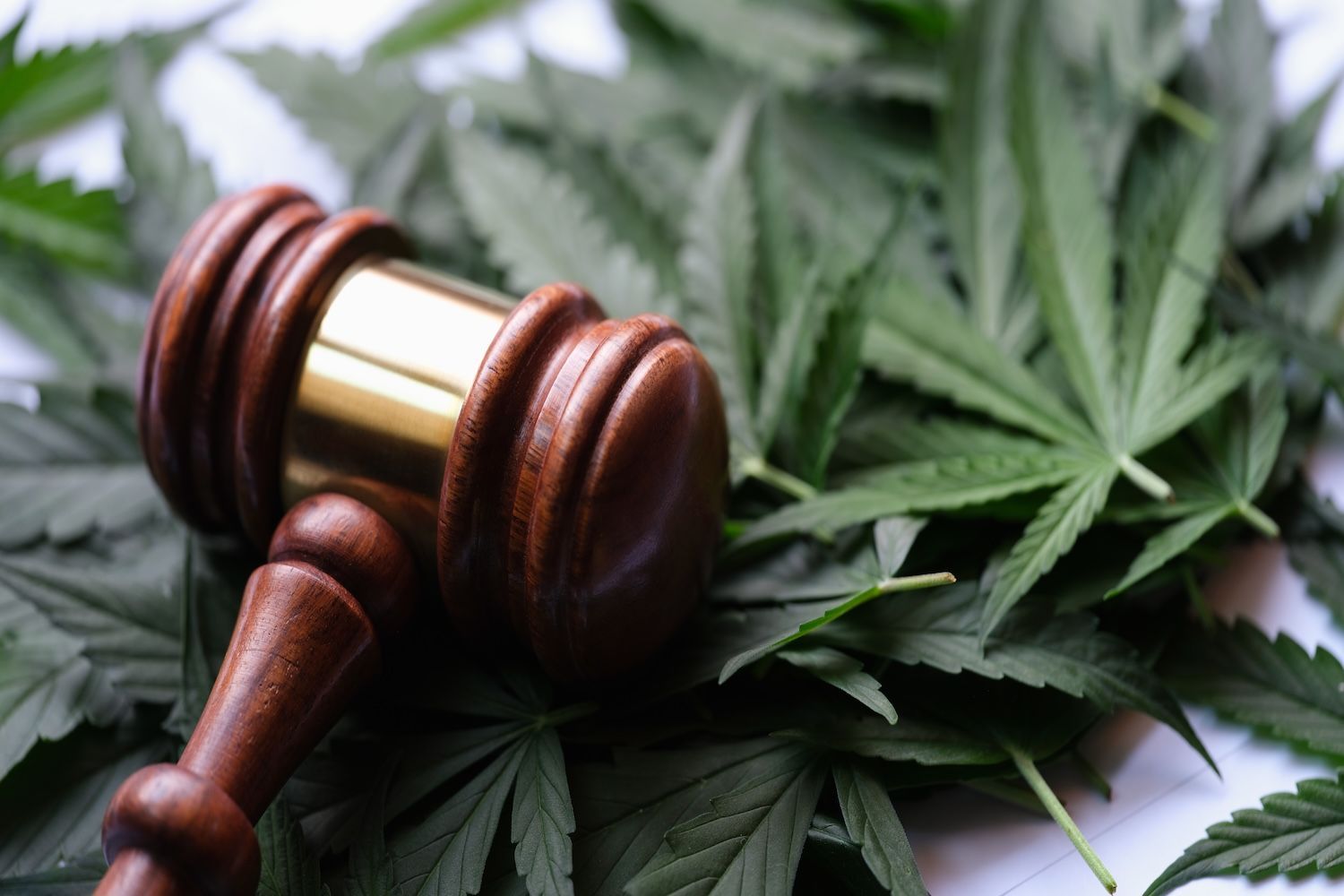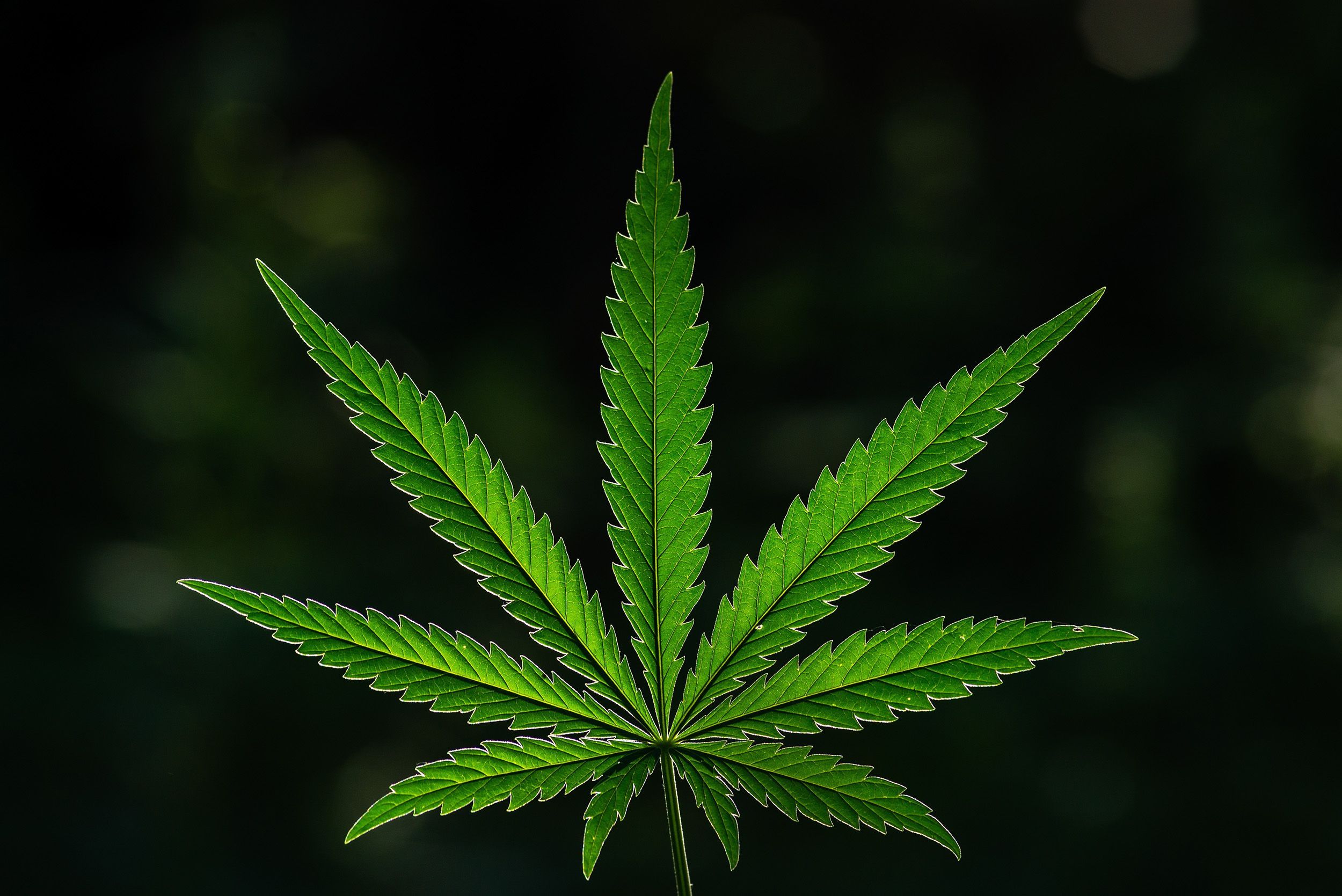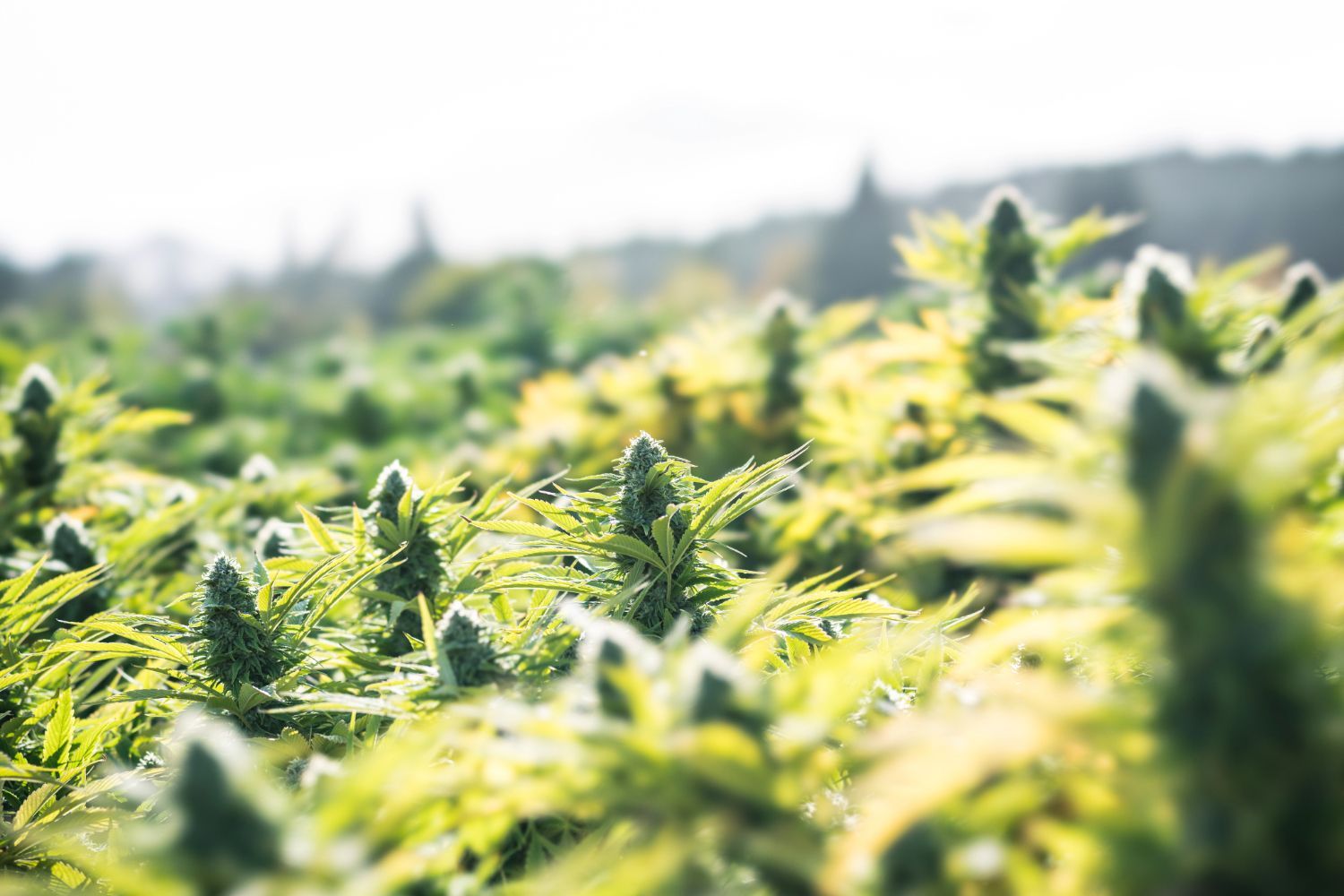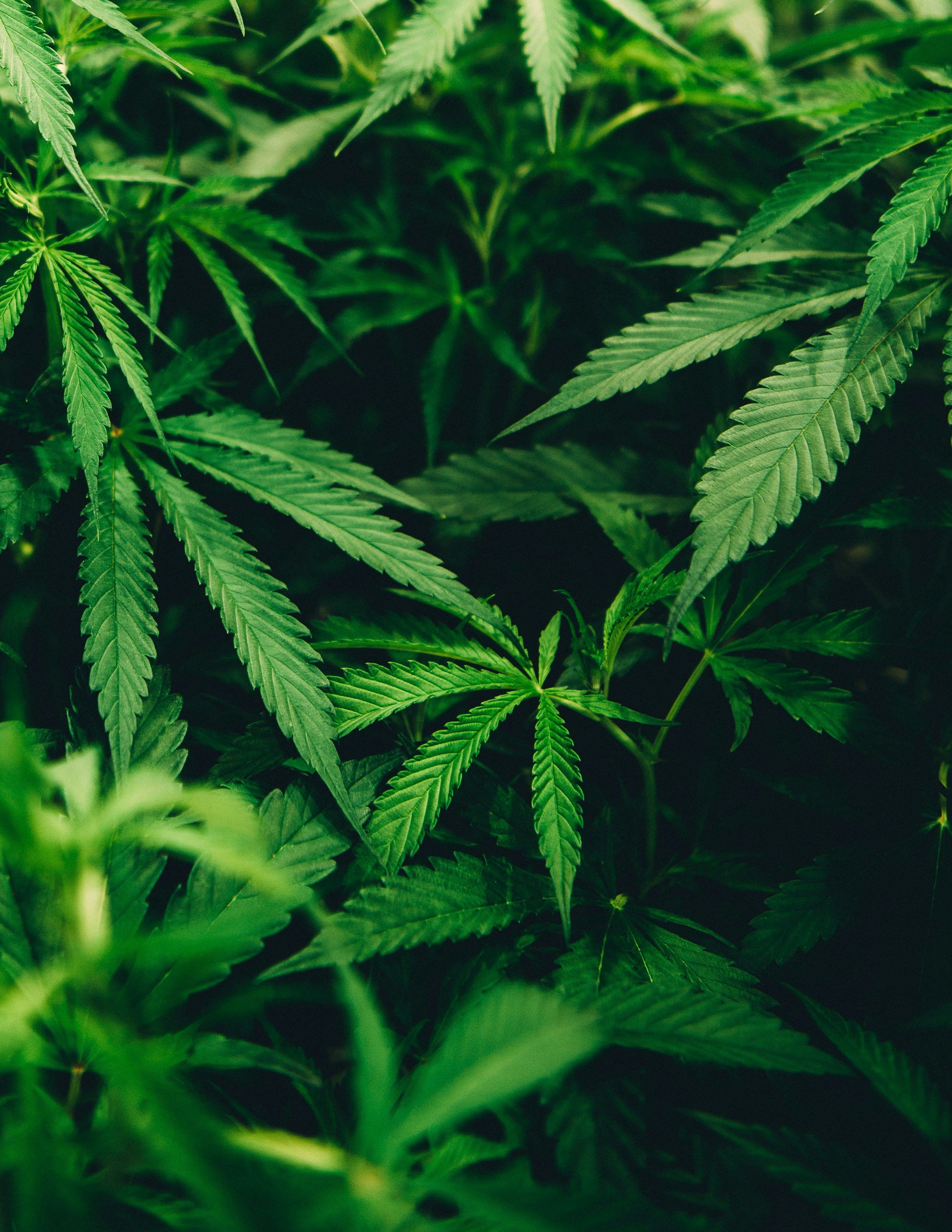Company affirms position as the largest wholesaler of branded products in the industry with $90.5 million in wholesale revenue
- Record revenue of $153.3 million, 63% growth QoQ, an absolute increase of $59 million
- Record adjusted EBITDA 1 of $46.4 million, 182% growth QoQ
- Record cashflow from operations of $17.8 million
- Retail revenue growth of 60% QoQ to $62.8 million
- Third consecutive quarter with over 40% revenue growth
Cresco Labs Inc. (CSE: CL) (OTCQX: CRLBF) (FSE: 6CQ) (" Cresco Labs " or the " Company "), one of the largest vertically integrated multi-state cannabis operators in the United States, today released its unaudited financial results for the third quarter ended September 30, 2020. All financial information presented in this release is in U.S. dollars, unless otherwise noted.
Management Commentary
Third Quarter 2020 Financial Highlights
Operating Results
- Revenue for the third quarter of 2020 was $153.3 million , an absolute increase of over $59.0 million or a 63% increase over Q2'20 revenue. Wholesale growth was driven by an increase in harvests from expanded capacity in Illinois and Pennsylvania with strong growth in California. Retail growth was driven by strong sequential same-store growth and two new store openings in Illinois.
- Operational Gross Profit 1 as a Percentage of Revenue was 53% in the quarter as compared to 47% in the prior quarter driven by increased efficiency in our expanded Illinois and Pennsylvania facilities.
- Adjusted EBITDA 1 was $46.4 million , an increase of 182% sequentially driven primarily from higher revenue, increased operational gross profit across our largest markets and strong SG&A control which dropped dramatically as a percentage of revenue.
- Net Income 2 was $4.9 million , which includes unrealized gains and losses on mark-to-market instruments that fluctuate until obligations are settled, changes in fair value of biological assets, interest expense and tax expense.
- Net Cash Provided by Operating Activities was $17.8 million , compared to $9.9 million used in Q2. The increase in cash provided by operating activities was driven by increased operating leverage across the business as the Company scales.
Shares Outstanding
Total shares on a fully converted basis were 380,035,735 as of September 30, 2020.
Conference Call and Webcast
The Company will host a conference call and webcast to discuss its financial results and provide investors with key business highlights on Wednesday, November 18, 2020, at 8:30am Eastern Time (7:30am Central Time). The conference call may be accessed via webcast or by dialing 866-688-4235 (409-216-0711 for international callers) and providing conference ID 9237505. Archived access to the webcast will be available for one year on the Cresco Labs' investor relations website.
Consolidated Financial Statements
The financial information reported in this press release is based on unaudited management prepared financial statements for the three months ended September 30, 2020. The Company expects to file its unaudited interim consolidated financial statements on SEDAR by November 18, 2020. All financial information contained in this press release is qualified in its entirety with reference to such financial statements. While the Company does not expect there to be any material changes between the information contained in this press release and the unaudited interim consolidated financial statements it files on SEDAR, to the extent that the financial information contained in this press release is inconsistent with the information contained in the Company's financial statements, the financial information contained in this press release shall be deemed to be modified or superseded by the Company's filed financial statements. The making of a modifying or superseding statement shall not be deemed an admission for any purposes that the modified or superseded statement, when made, constituted a misrepresentation for purposes of applicable securities laws. Further, the reader should refer to the additional disclosures in the Company's audited financial statements for the year ended December 31, 2019, previously filed on SEDAR.
Cresco Labs references certain non-IFRS financial measures throughout this press release, which may not be comparable to similar measures presented by other issuers. Please see the "Non-IFRS Financial Measures" section at the end of this press release for more detailed information.
About Cresco Labs Inc.
Cresco Labs is one of the largest vertically-integrated multi-state cannabis operators in the United States. Cresco Labs is built to become the most important company in the cannabis industry by combining the most strategic geographic footprint with one of the leading distribution platforms in North America. Employing a consumer-packaged goods ("CPG") approach to cannabis, Cresco Labs' house of brands is designed to meet the needs of all consumer segments and includes some of the most recognized and trusted national brands including Cresco, Remedi and Mindy's, a line of edibles created by James Beard Award-winning chef Mindy Segal. Sunnyside*, Cresco Labs' national dispensary brand, is a wellness-focused retailer designed to build trust, education and convenience for both existing and new cannabis consumers. Recognizing that the cannabis industry is poised to become one of the leading job creators in the country, Cresco Labs has launched the industry's first national comprehensive Social Equity and Educational Development (SEED) initiative designed to ensure that all members of society have the skills, knowledge and opportunity to work in and own businesses in the cannabis industry. Learn more about Cresco Labs at www.crescolabs.com .
Non-IFRS Financial Measures
Operational gross profit, EBITDA and Adjusted EBITDA, net of impact of biological assets, are non-IFRS measures and do not have standardized definitions under IFRS. The Company has provided these non-IFRS financial measures, which are not calculated or presented in accordance with IFRS, as supplemental information and in addition to the financial measures that are calculated and presented in accordance with IFRS. These supplemental non-IFRS financial measures are presented because management has evaluated the financial results both including and excluding the adjusted items and believes that the supplemental non-IFRS financial measures presented provide additional perspective and insights when analyzing the core operating performance of the business. These supplemental non-IFRS financial measures should not be considered superior to, as a substitute for or as an alternative to, and should only be considered in conjunction with, the IFRS financial measures presented herein. Accordingly, the Company has included below reconciliations of the supplemental non-IFRS financial measures to the most directly comparable financial measures calculated and presented in accordance with IFRS.
Forward Looking Statements
This press release contains "forward-looking information" within the meaning of applicable Canadian securities legislation and may also contain statements that may constitute "forward-looking statements" within the meaning of the safe harbor provisions of the United States Private Securities Litigation Reform Act of 1995. Such forward-looking information and forward-looking statements are not representative of historical facts or information or current condition, but instead represent only the Company's beliefs regarding future events, plans or objectives, many of which, by their nature, are inherently uncertain and outside of the Company's control. Generally, such forward-looking information or forward-looking statements can be identified by the use of forward-looking terminology such as, ‘may,' ‘will,' ‘should,' ‘could,' ‘would,' ‘expects,' ‘plans,' ‘anticipates,' ‘believes,' ‘estimates,' ‘projects,' ‘predicts,' ‘potential' or ‘continue' or the negative of those forms or other comparable terms. The Company's forward-looking statements involve known and unknown risks, uncertainties and other factors which may cause the Company's actual results, performance or achievements to be materially different from any future results, performance or achievements expressed or implied by the forward-looking statements, including but not limited to those risks discussed under "Risk Factors" in the Company's Annual Information Form dated April 28, 2020, and other documents filed by the Company with Canadian securities regulatory authorities; and other factors, many of which are beyond the control of the Company. Readers are cautioned that the foregoing list of factors is not exhaustive. Because of these uncertainties, you should not place undue reliance on the Company's forward-looking statements. No assurances are given as to the future trading price or trading volumes of Cresco Labs' shares, nor as to the Company's financial performance in future financial periods. The Company does not intend to update any of these factors or to publicly announce the result of any revisions to any of the Company's forward-looking statements contained herein, whether as a result of new information, any future event or otherwise. Except as otherwise indicated, this press release speaks as of the date hereof. The distribution of this press release does not imply that there has been no change in the affairs of the Company after the date hereof or create any duty or commitment to update or supplement any information provided in this press release or otherwise.
1 See "Non-IFRS Financial Measures" at the end of this press release for more information regarding the Company's use of non-IFRS financial measures. Adjusted EBITDA is presented net of impact of biological assets.
2 Net income includes amounts attributable to non-controlling interests.
| Cresco Labs Inc. | ||||||||||||
| Unaudited Financial Information and Non-IFRS Reconciliations | ||||||||||||
| (All amounts expressed in thousands of U.S. Dollars) | ||||||||||||
| Unaudited Consolidated Statements of Operations | ||||||||||||
| For the Three Months Ended September 30, 2020, June 30, 2020 and September 30, 2019 | ||||||||||||
| For the Three Months Ended | ||||||||||||
| ($ in thousands) | 9/30/2020 |
| 6/30/2020 |
| 9/30/2019 | |||||||
| Revenue | $ | 153,298 |
| $ | 94,256 |
| $ | 36,207 |
| |||
| Cost of sales - production costs |
| (74,148 | ) |
| (60,835 | ) |
| (23,369 | ) | |||
| Gross profit before fair value adjustments |
| 79,150 |
|
| 33,421 |
|
| 12,838 |
| |||
| Realized changes in fair value of inventory sold |
| (72,560 | ) |
| (41,774 | ) |
| (22,908 | ) | |||
| Unrealized gain on changes in fair value of biological assets |
| 78,041 |
|
| 77,822 |
|
| 30,910 |
| |||
| Gross profit |
| 84,631 |
|
| 69,469 |
|
| 20,840 |
| |||
| GP% |
| 55.2 | % |
| 73.7 | % |
| 57.6 | % | |||
| Expenses: | ||||||||||||
| Selling, general and administrative |
| 46,763 |
|
| 45,186 |
|
| 25,474 |
| |||
| Depreciation and amortization |
| 5,800 |
|
| 5,358 |
|
| 991 |
| |||
| Total expenses |
| 52,563 |
|
| 50,544 |
|
| 26,465 |
| |||
| Gain (loss) from operations |
| 32,068 |
|
| 18,925 |
|
| (5,625 | ) | |||
| Other (expense) income: | ||||||||||||
| Interest expense, net |
| (11,319 | ) |
| (9,597 | ) |
| (1,094 | ) | |||
| Other (expense) income, net |
| (2,983 | ) |
| (740 | ) |
| 2,714 |
| |||
| Income from investment in associate |
| (134 | ) |
| 24 |
|
| 35 |
| |||
| Total other expense (income), net |
| (14,436 | ) |
| (10,313 | ) |
| 1,655 |
| |||
| Income (loss) before income taxes |
| 17,632 |
|
| 8,612 |
|
| (3,970 | ) | |||
| Income tax expense |
| (12,690 | ) |
| (13,312 | ) |
| (4,624 | ) | |||
| Net income (loss) 1 | $ | 4,942 |
| $ | (4,700 | ) | $ | (8,594 | ) | |||
| 1 Net income (loss) includes amounts attributable to non-controlling interests. | ||||||||||||
| Cresco Labs Inc. | ||||||
| Summarized Consolidated Statements of Financial Position | ||||||
| As of September 30, 2020 and December 31, 2019 | ||||||
| September 30, 2020 | December 31, 2019 | |||||
| ($ in thousands) | (Unaudited) | (Audited) | ||||
| Cash and cash equivalents | $ | 57,689 | $ | 49,102 | ||
| Other current assets |
| 199,405 |
| 110,236 | ||
| Property and equipment, net |
| 180,649 |
| 155,839 | ||
| Intangible assets, net |
| 195,953 |
| 94,206 | ||
| Goodwill |
| 451,632 |
| 137,719 | ||
| Other non-current assets |
| 121,321 |
| 69,452 | ||
| Total assets | $ | 1,206,649 | $ | 616,554 | ||
| Total current liabilities |
| 243,731 |
| 150,169 | ||
| Total long-term liabilities |
| 221,294 |
| 143,762 | ||
| Total shareholders' equity |
| 741,624 |
| 322,623 | ||
| Total liabilities and shareholders' equity | $ | 1,206,649 | $ | 616,554 | ||
| Cresco Labs Inc. | ||||||||||||
| Unaudited Revenue and Gross Profit Metrics | ||||||||||||
| For the Three Months Ended, September 30, 2020, June 30, 2020 and September 30, 2019 | ||||||||||||
| For the Three Months Ended | ||||||||||||
| ($ in thousands) | 9/30/2020 |
| 6/30/2020 |
| 9/30/2019 | |||||||
| Revenue | $ | 153,298 |
| $ | 94,256 |
| $ | 36,207 |
| |||
| Cost of sales – production costs 1 |
| (74,148 | ) |
| (60,835 | ) |
| (23,369 | ) | |||
| Realized changes in fair value of inventory sold |
| (72,560 | ) |
| (41,774 | ) |
| (22,908 | ) | |||
| Unrealized gain on changes in fair value of biological assets |
| 78,041 |
|
| 77,822 |
|
| 30,910 |
| |||
| Gross profit | $ | 84,631 |
| $ | 69,469 |
| $ | 20,840 |
| |||
| Cultivation costs expensed under IAS 41 2 |
| (3,934 | ) |
| 3,951 |
|
| 2,075 |
| |||
| Net impact of fair value of biological assets |
| (5,481 | ) |
| (36,048 | ) |
| (8,002 | ) | |||
| Expansion, relaunch and rebranding costs 3 |
| 2,693 |
|
| 4,616 |
|
| 2,157 |
| |||
| COVID-19 related expenses |
| 846 |
|
| 1,887 |
|
| - |
| |||
| Fair value markup for acquired inventory |
| 1,843 |
|
|
| 331 |
|
|
| - |
| |
| Operational gross profit (Non-IFRS) | $ | 80,598 |
| $ | 44,206 |
| $ | 17,070 |
| |||
| Operational GP% |
| 52.6 | % |
| 46.9 | % |
| 47.1 | % | |||
| 1 Production (cultivation, manufacturing, and processing) costs related to products sold during the period. | ||||||||||||
| 2 Costs would be capitalized under IAS 2 and do not reflect cost of inventory sold in the period. | ||||||||||||
| 3 Costs related to non-recurring third-party product costs, start-up costs, and samples/discounts to expand footprint and relaunch in certain markets. | ||||||||||||
| Cresco Labs Inc. | |||||||||||
| Unaudited Reconciliation of Net Income to Adjusted EBITDA | |||||||||||
| For the Three Months Ended, September 30, 2020, June 30, 2020 and September 30, 2019 | |||||||||||
| For the Three Months Ended | |||||||||||
| ($ in thousands) | 9/30/2020 |
| 6/30/2020 |
| 9/30/2019 | ||||||
| Net income (loss) 1 | $ | 4,942 |
| $ | (4,700 | ) | $ | (8,594 | ) | ||
| Depreciation and amortization |
| 10,831 |
|
| 9,626 |
|
| 3,287 |
| ||
| Interest expense, net |
| 11,319 |
|
| 9,597 |
|
| 1,094 |
| ||
| Income tax expense |
| 12,690 |
|
| 13,312 |
|
| 4,624 |
| ||
| Earnings before interest, taxes, depreciation and amortization (EBITDA) (Non-IFRS) | $ | 39,782 |
| $ | 27,835 |
| $ | 411 |
| ||
| Expansion, relaunch and rebranding costs 2 |
| 2,693 |
|
| 4,616 |
|
| 2,157 |
| ||
| COVID-19 related expenses |
| 956 |
|
| 2,648 |
|
| - |
| ||
| Other expense (income), net |
| 2,983 |
|
| 740 |
|
| (2,714 | ) | ||
| (Loss) gain from investment in associate |
| 134 |
|
| (24 | ) |
| (35 | ) | ||
| Fair value markup for acquired inventory |
| 1,843 |
|
| 331 |
|
| - |
| ||
| Cultivation costs expensed under IAS 41 3 |
| (3,934 | ) |
| 3,951 |
|
| 2,075 |
| ||
| Adjustments for acquisition and other non-core costs |
| 4,424 |
|
| 5,205 |
|
| 4,709 |
| ||
| Management incentive compensation (share-based) |
| 3,033 |
|
| 7,207 |
|
| 4,487 |
| ||
| Adjusted EBITDA (Non-IFRS) | $ | 51,914 |
| $ | 52,509 |
| $ | 11,090 |
| ||
| Net impact of fair value of biological assets |
| (5,481 | ) |
| (36,048 | ) |
| (8,002 | ) | ||
| Adjusted EBITDA (non-IFRS), net of impact of biological assets | $ | 46,433 |
| $ | 16,461 |
| $ | 3,088 |
| ||
| 1 Net income (loss) includes amounts attributable to non-controlling interests. | |||||||||||
| 2 Costs related to non-recurring third-party product costs, start-up costs, and samples/discounts to expand footprint and relaunch in certain markets. | |||||||||||
| 3 Costs would be capitalized under IAS 2 and do not reflect cost of inventory sold in the period. | |||||||||||
| Cresco Labs Inc. | ||||||||||||||
| Unaudited Summarized Consolidated Statements of Cash Flows | ||||||||||||||
| For the Three Months Ended, September 30, 2020, June 30, 2020 and September 30, 2019 | ||||||||||||||
| For the Three Months Ended | ||||||||||||||
| ($ in thousands) | 9/30/2020 | 6/30/2020 | 9/30/2019 | |||||||||||
| Net provided by (used in) operating activities | $ | 17,770 |
| $ | (9,881 | ) | $ | (6,160 | ) | |||||
| Net cash (used in) provided by investing activities |
| (12,147 | ) |
| 14,888 |
|
| (33,556 | ) | |||||
| Net cash (used in) provided by financing activities |
| (18,869 | ) |
| (2,227 | ) |
| 52,774 |
| |||||
| Effect of foreign currency exchange rate changes on cash |
| (1,005 | ) |
| (288 | ) |
| - |
| |||||
| Net (decrease) increase in cash and cash equivalents |
| (14,251 | ) |
| 2,492 |
|
| 13,058 |
| |||||
| Cash and cash equivalents and restricted cash, beginning of period |
| 73,868 |
|
| 71,376 |
|
| 68,694 |
| |||||
| Cash and cash equivalents and restricted cash, end of period | $ | 59,617 |
| $ | 73,868 |
| $ | 81,752 |
| |||||
View source version on businesswire.com: https://www.businesswire.com/news/home/20201118005418/en/
Media
Jason Erkes, Cresco Labs
Chief Communications Officer
press@crescolabs.com
312-953-2767
Investors
Jake Graves, Cresco Labs
Investor Relations Senior Analyst
investors@crescolabs.com
For general Cresco Labs inquiries:
312-929-0993
info@crescolabs.com

